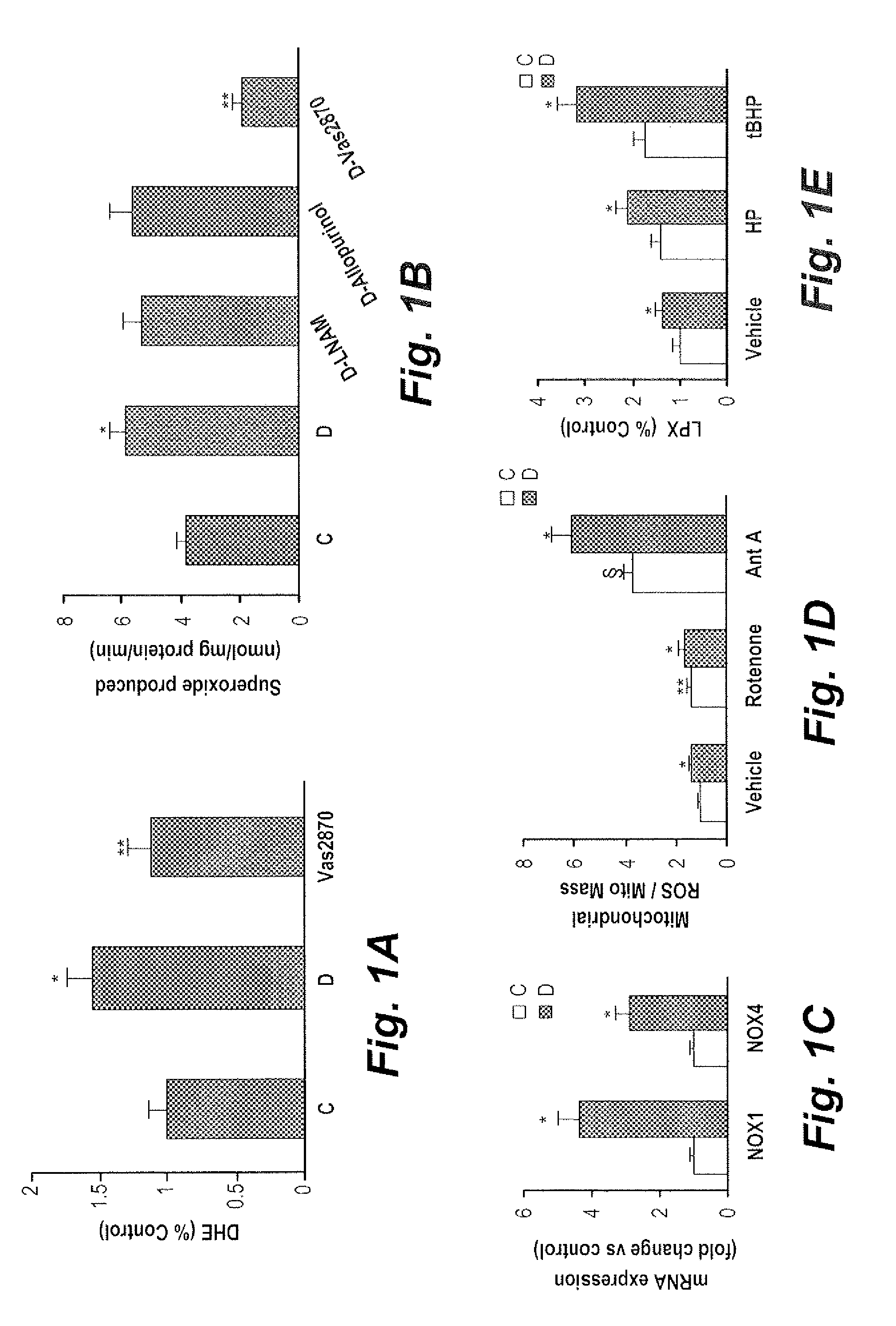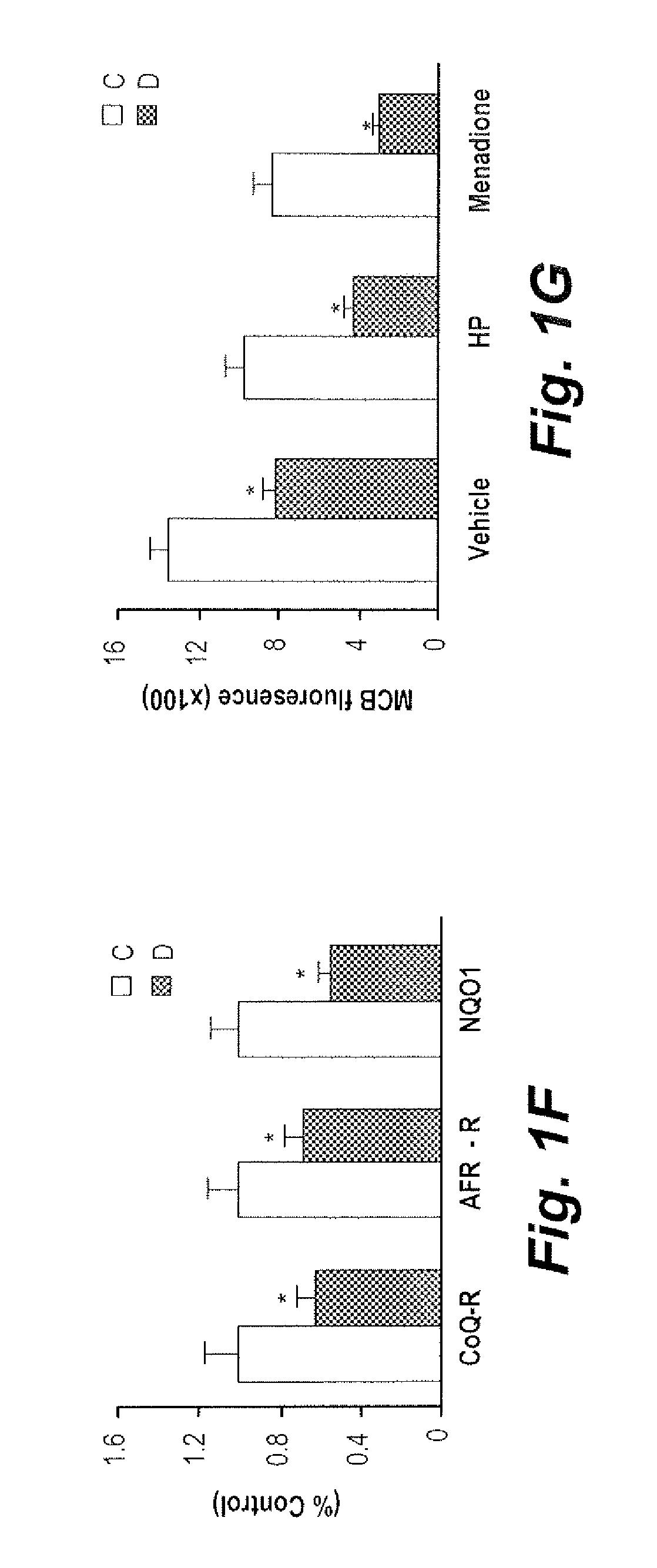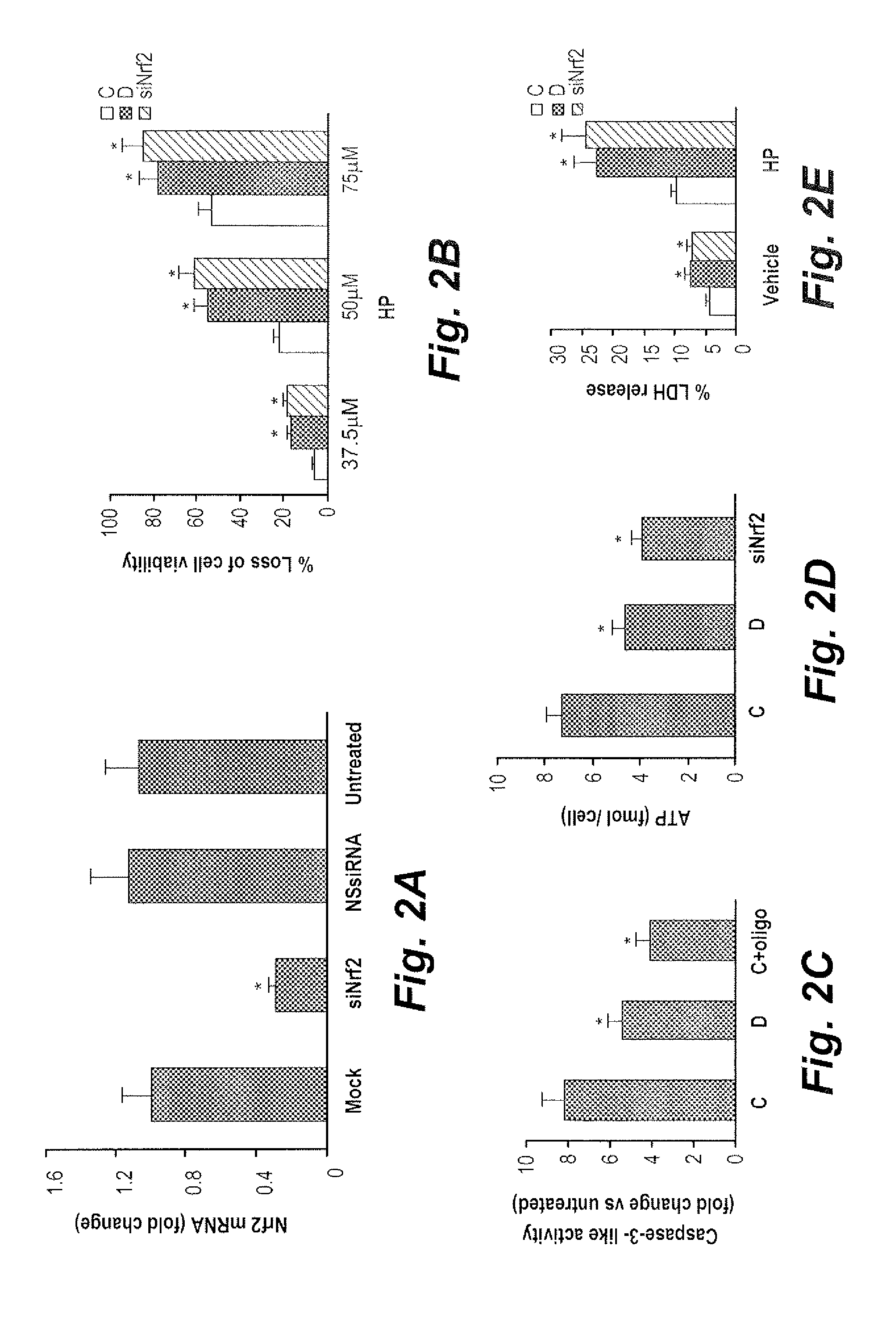Method of treating impaired wound healing in diabetics
a diabetic and wound healing technology, applied in the field of wound healing, can solve problems such as suffering from impaired wound healing
- Summary
- Abstract
- Description
- Claims
- Application Information
AI Technical Summary
Benefits of technology
Problems solved by technology
Method used
Image
Examples
example 1
[0073]Example 1 is a study demonstrating that diabetic fibroblasts exhibit a state of heightened oxidative stress and that NADPH oxidase in the mitochondrial membrane contributes to this state. Following the procedures above, it was determined that superoxide generation over a 30-minute period was 55% higher in DFs relative to corresponding control values (FIG. 1A). This radical is a by-product of mitochondrial respiration and enzymatic oxidases. Accordingly, it was examined whether the observed elevation in superoxide stemmed from enhanced activity of the non-phagocytic NAD(P)H oxidase. The resulting data showed that VAS2870, a specific NADPH oxidase inhibitor, reduced the diabetes-related increase in superoxide by about 31%, thus supporting the partial involvement of NAD(P)H oxidase (FIG. 1A). To more directly assess the involvement of NADPH oxidase in diabetes-related increase in superoxide generation, we determined NADPH-dependent superoxide generation in 28,000×g membrane fract...
example 2
[0079]Example 2 is a study of the effect of hydrogen peroxide (HP)-induced oxidative stress on cell death among control and diabetic fibroblasts. A wealth of evidence indicates that chronic oxidative stress, which the above examples clearly confirm exist in DFs, can alter the sensitivity and the mechanism by which a cell dies in response to various stressors. Accordingly, in this study, the effect of HP, the most common endogenous oxidant, on cell viability and caspase-3-like activities in CFs and DFs was evaluated.
[0080]The resulting data show that exposure of DFs to 37.5, 50 and 75 μM HP for 16 h leads to a 17%, 55% and 78% loss in cell viability, respectively (FIG. 2A). However, exposure of control cells to the same concentrations of HP results in less marked changes in cellular viability of only 6%, 22% and 53%, respectively (FIG. 2A).
[0081]Next, the caspase-3-like activity in response to 50 μM of HP was also determined. As shown in FIG. 2B, the fold increase in caspase-3-like a...
example 3
[0082]Example 3 is a study undertaken to explore the cell-signaling basis for the phenotype observed above in DFs. To inspect at the molecular level the reasons for the heightened level of oxidative stress (OS) and the enhanced sensitivity of DFs to HP-induced cell death, focused was placed on the Nrf2 signaling pathway.
[0083]The data derived from these studies show that Nrf2 levels in total cellular protein extracts are diminished in DFs relative to CFs (FIG. 3A), an abnormality that appears not be due to a reduction in mRNA level (normalized to 18S RNA and expressed as a fold change vs. control, CFs=1±10.12, DFs=1.71±0.21, P≦0.05), nor to a decrease in mRNA half-life as shown by an experiment using actinomycin D (ActD 10 ng / ml, data not shown). These findings, in connection with the confirmed elevation in Keap1 levels (FIG. 3B), which is a component of an E3 ubiquitin ligase complex that targets Nrf2 for degradation during diabetes, prompted the assessment of Nrf2 protein stabilit...
PUM
| Property | Measurement | Unit |
|---|---|---|
| pH | aaaaa | aaaaa |
| time | aaaaa | aaaaa |
| pH | aaaaa | aaaaa |
Abstract
Description
Claims
Application Information
 Login to View More
Login to View More - R&D
- Intellectual Property
- Life Sciences
- Materials
- Tech Scout
- Unparalleled Data Quality
- Higher Quality Content
- 60% Fewer Hallucinations
Browse by: Latest US Patents, China's latest patents, Technical Efficacy Thesaurus, Application Domain, Technology Topic, Popular Technical Reports.
© 2025 PatSnap. All rights reserved.Legal|Privacy policy|Modern Slavery Act Transparency Statement|Sitemap|About US| Contact US: help@patsnap.com



